Traduzione generata automaticamente
Mostra originale
Mostra traduzione
Rolf Hans
Frankfurt am Main 1938 - 1996 Basel
Great Totem VIII, 1992
wood
Signed on the underside, dated and titled
Size incl. Socket: 193 x 20.5 x 17 cm
including a catalog about the artist
Provenance: from the estate of the artist
Poetry of things
At the beginning of the 1970s, Rolf Hans begins with the design of objects for the first time. There are small sculptures, which he consumed from iron tubes with round or square profile. With them, he seeks to create a new, three-dimensional experience in parallel with his simultaneous paintings.
In 1987, Hans reappears the medium sculpture. The work process is now no longer considered to consciously construct it, but a guided manner. And as with his picturesque work, his objects are now emerging from an inner need not to fill an intellectual vacuum. This forced has been under control for decades and for a few years I try to pacify him with the cycle, poetry of things. The spiritual climate was prepared .
So Hans focuses on the work on the sculpture cycle in his last year of life. And as in the intoxication, he draws from the new possibilities, which offers him the design of the objects: The poetry of things grows, she swarms all time, much is neglected, barely letters, the journal is largely silent, concert attention is limited to essential . It creates a compulsion and has begun as a game, but attempts were always a serious thing that demand all the guy. [...] The objects have in my ratio, cautiously and unnoticed, claim their place, have taken him, are part of my own.
It's a difficult thing with the art, with a view of the predecessors you try to find the way, the time spirit and aesthetics influence the direction, you know if the dissatisfaction in which you move. Now, in the middle of the 'poetry of things' a sense of Freisin, nevertheless closely associated with much something before, there is no program, only a title of every work of freedom allowed.
But despite the role models in mind, Hans succeeds from the beginning with his object cycle to find very independent formulation options. What connects him with Max Ernst, Brancusi, Duchamp is only the starting material: Funds.
There are very banal things of everyday life - formerly needed, useful and practical such as tools, utensils, devices - which are relieved of their function and now serve the artist as a door to the imagination.
In this case, Hans undresses the things of their previous, traditional function or archaic determination and transports them into another, new reality to brave them back. He does not want to deny the found figure without being aestheticizing. Her, innate 'structure, signs of wear and color only slightly changing, he seeks to highlight their sense and purpose as a form and redefine their inherent broadcast.
Things are being edited, in combat with the artist to uncover their peculiarity and to make new statements in connection with other objects.
Thus, Hans without any artificiality presents the abstract symmetries of the wood and metal objects and placed them entirely the artistic tradition on a pedestal. In addition, he integrates this into the work. Because as the bottom component, the socket is not only preparing for the sculpture, but relaxes, triggers or strengthens its earth's connection. With this erection, he gives the sculptures a further own life, so to speak a second existence, and gives them a new identity with a new name. They show their personality, one more, another less, as so is in life, or in art. What is meant to them all, their work is from the past in this here and now. They reveal their original beauty and the mystical that inspires our imagination.
Through which ambivalent ways the sculptures and objects of Rolf Hans also meet us, they never do this loud or exalted. In their balanced and simple appearance they step quietly and quietly, but determining with us in contact. Alienating urgent urgently ask us to ask questions: Who am I? Where do I come from? Where am I going? They offer us no hints that could help us in answering. To do this, give us a greater scope for associations and imaginations. They appeal to our subconscious. They invite us to linger and for meditation: it is the general start and the unconscious break to the secrets of creation.
Exhibitions (Selection)
2021 Gallery Michael Blaszczyk, Bad Homburg Language of the Colors-the Basel Cabinet
2020 Malte Ueckermann art trade, Berlin, Kanalidarte, Brescia Che Cosa Avrebbe Detto Hegel_rolf Hans ... E La poesia della Cose, Italy, art trade Draheim Art Karlsruhe, Poetry of Things
2019 Gallery Jörg Schuhmacher, Frankfurt, Gallery Blaszczyk, Bad Homberg
2018 Art Karlsruhe, art trade Draheim, Wiesbaden, color fields Gallery Dekker, Baden-Baden, Retrospective Gallery Blaszczyk, Bad Homburg
2017 Gallery Eklectik, Monte Carlo, Monaco Gallery Schuhmacher, Frankfurt am Main 2016 Gallery Cerny & Partner, Wiesbaden (Language of colors) Art Karlsruhe, art trade Draheim, Wiesbaden (Tachistic painting + iron sculptures) Gallery Rainer Klimczak, Viersen Gallery Shoe makers, Frankfurt AM ( Black on white) 2015 Gallery Blaszczyk, Bad Homburg Art Karlsruhe, One Artist Show (Gallery Cerny and Partner) Gallery Eklectik, Monte Carlo, Monaco
2014 Gallery Jörg Schuhmacher, Frankfurt am Main (a retrospective-1) Gallery Tristan Lorenz., Frankfurt am Main (a retrospective-2) Hellhof Gallery, Kronberg im Taunus (Works of 1960 - 1980) Art Fair, Cologne, Monochrome painting (Gallery & Trading Draheim, Wiesbaden)
2013 art trade Thole Rotermund, Hamburg (in the power field of color) + Catalog Gallery & Trading Draheim, Wiesbaden (Painting & Sculpture 1970 - 1990)
2012 Art Karlsruhe, One Artist Show (Gallery & Trading Draheim, Wiesbaden) 2011 Gallery & Trading Draheim, Wiesbaden (in the intoxication of the colors - Works of the 60s)
2009 Ketterer Kunst, Berlin (Rolf Hans - painting and sculpture) Art trade Michael Draheim, Wiesbaden (Rolf Hans - Poetry of Things)
2008 Gallery Art Mayence, Mainz (Rolf Hans - Color Language) Gallery Jörg Schuhmacher, Frankfurt a. M. (Rolf Hans) Galerie Winterberg, Munich (Rolf Hans - The Language of Colors) Gallery Jörg Schuhmacher, Frankfurt A.M., Art Karlsruhe (Rolf Hans - One Artist Show)
2007 Gallery Jörg Schuhmacher, Frankfurt a. M. (Rolf Hans in the field of tension of the 'Quadriga') 2001 Kunstraum Aare, Olten (Rolf Hans - Pictures, Sculptures, Photographs ) 1999, Art in Liebfrüti ', Kaiseraugst ( Martin Frigg and Rolf Hans ) 1992 Municipal Gallery, Snake Bath (Gabriele Schmolk Hieber, Pictures - Rolf Hans, Objects)
1991 Museum Castle Salt, Salzgitter (Poetry of Things) 1990 Gallery Brechbühl, Grenchen (Poetry of Things) 1985 1985 Gallery Toni Brechbühl, Grenchen (Two Friends, Ho Kan, Milan - Rolf Hans, Basel) Gallery Toni Brechbühl, Grenchen (Rolf Hans - Oil Pictures 1983-1985) 1981
1981 Gallery Toni Brechbühl, Grenchen (Rolf Hans - Rolf Brunner - Michelle Hänggi) SWB Forum, Bern (Frans Webering, acrylic glass Objects - Rolf Hans, Watercolors)
1978 1978 Gallery Toni Brechbühl, Grenchen (30 years Gallery Toni Brechbühl)
1977 Gallery Toni Brechbühl, Grenchen Art 8/77, Basel (Gallery Toni Brechbühl, Grenchen)
1975 Art Basel 6/75, Basel (Gallery Toni Brechbühl, Grenchen) Gallery Chutz in Solthurn (oil paintings, Gouachen) 1966 Gallery Toni Brechbühl, Grenchen (Watercolors)
1964 Gallery Toni Brechbühl, Grenchen (drawings, Gouachen, oil paintings)
Rolf Hans
Francoforte sul Meno 1938 - 1996 Basilea
Grande Totem VIII, 1992
legno
Firmato sul lato inferiore, datato e titolato
Dimensioni incl. zoccolo: 193 x 20,5 x 17 cm
incluso un catalogo sull'artista
Provenienza: dalla proprietà dell'artista
Poesia delle cose
All'inizio degli anni '70, Rolf Hans inizia per la prima volta con il disegno di oggetti. Ci sono piccole sculture, che ha consumato da tubi di ferro con profilo rotondo o quadrato. Con esse, cerca di creare una nuova esperienza tridimensionale in parallelo con i suoi dipinti simultanei.
Nel 1987, Hans riappare il mezzo scultura. Il processo di lavoro non è più considerato una costruzione cosciente, ma un modo guidato. E come per il suo lavoro pittoresco, i suoi oggetti emergono ora da un bisogno interiore non per riempire un vuoto intellettuale. "Questo forzato è sotto controllo da decenni e da qualche anno cerco di pacificarlo con il ciclo, la poesia delle cose" Il clima spirituale è stato preparato ".
Così Hans si concentra sul lavoro sul ciclo di scultura nel suo ultimo anno di vita. E come nell'ebbrezza, attinge alle nuove possibilità, che gli offre il design degli oggetti: "La poesia delle cose cresce, lei brulica tutto il tempo, molto è trascurato, a malapena le lettere, il giornale è in gran parte silenzioso, l'attenzione concerto è limitato all'essenziale . Si crea una compulsione ed è iniziato come un gioco, ma i tentativi erano sempre una cosa seria che richiedono tutto il ragazzo. [...] Gli oggetti hanno nel mio rapporto, cautamente e inosservato, rivendicare il loro posto, lo hanno preso, sono parte del mio proprio. "
"È una cosa difficile con l'arte, con una vista dei predecessori si cerca di trovare la strada, lo spirito del tempo e l'estetica influenzano la direzione, si sa se l'insoddisfazione in cui ci si muove. Ora, nel mezzo della 'poesia delle cose' un senso di Freisin, tuttavia strettamente associato a molto qualcosa prima, non c'è un programma, solo un titolo di ogni lavoro di libertà consentito. "
Ma nonostante i modelli di ruolo in mente, Hans riesce fin dall'inizio con il suo ciclo di oggetti a trovare opzioni di formulazione molto indipendenti. Ciò che lo collega a Max Ernst, Brancusi, Duchamp è solo il materiale di partenza: I fondi.
Ci sono cose molto banali della vita quotidiana - un tempo necessarie, utili e pratiche come attrezzi, utensili, dispositivi - che vengono sollevate dalla loro funzione e ora servono all'artista come porta per l'immaginazione.
In questo caso, Hans spoglia le cose della loro precedente, tradizionale funzione o determinazione arcaica e le trasporta in un'altra, nuova realtà, per riaverle coraggiosamente. Non vuole negare la figura trovata senza essere estetizzante. La sua, innata 'struttura, segni di usura e colore solo leggermente mutevole, egli cerca di evidenziare il loro senso e lo scopo come forma e ridefinire la loro trasmissione intrinseca.
Le cose vengono modificate, in lotta con l'artista per scoprire la loro peculiarità e per fare nuove dichiarazioni in connessione con altri oggetti.
Così, Hans senza alcuna artificiosità presenta le simmetrie astratte degli oggetti di legno e metallo e li colloca interamente la tradizione artistica su un piedistallo. Inoltre, egli integra questo nell'opera. Perché come componente inferiore, la presa non solo prepara la scultura, ma rilassa, scatena o rafforza la sua connessione alla terra. Con questa erezione, egli dà alle sculture un'ulteriore vita propria, per così dire una seconda esistenza, e dà loro una nuova identità con un nuovo nome. "Mostrano la loro personalità, una più, un'altra meno, come è nella vita, o nell'arte" Cosa significa per tutti loro, il loro lavoro è del passato in questo qui e ora. Essi rivelano la loro bellezza originale e il mistico che ispira la nostra immaginazione.
Attraverso quali modi ambivalenti le sculture e gli oggetti di Rolf Hans ci incontrano anche, non lo fanno mai forte o esaltato. Nel loro aspetto equilibrato e semplice passo tranquillamente e silenziosamente, ma determinare con noi in contatto. Alienante urgente ci chiedono urgentemente di fare domande: Chi sono io? Da dove vengo? Dove sto andando? Non ci offrono alcun suggerimento che possa aiutarci a rispondere. Per fare questo, ci danno un maggiore spazio per le associazioni e le immaginazioni. Fanno appello al nostro subconscio. Ci invitano a soffermarci e a meditare: è l'inizio generale e la rottura inconscia ai segreti della creazione.
Mostre (selezione)
2021 Galleria Michael Blaszczyk, Bad Homburg "Il linguaggio dei colori - Il gabinetto di Basilea"
2020 Malte Ueckermann art trade, Berlino, Kanalidarte, Brescia "Che Cosa Avrebbe Detto Hegel_rolf Hans ... E La poesia della Cose", Italia, art trade Draheim "Art Karlsruhe", "Poetry of Things"
2019 Galleria Jörg Schuhmacher, Francoforte, Galleria Blaszczyk, Bad Homberg
2018 Art Karlsruhe, art trade Draheim, Wiesbaden, campi di colore Galleria Dekker, Baden-Baden, Retrospettiva Galleria Blaszczyk, Bad Homburg
2017 Galleria Eklectik, Monte Carlo, Monaco Galleria Schuhmacher, Francoforte sul Meno 2016 Galleria Cerny & Partner, Wiesbaden (Linguaggio dei colori) Art Karlsruhe, art trade Draheim, Wiesbaden (Pittura tachimetrica + sculture in ferro) Galleria Rainer Klimczak, Viersen Galleria Shoe makers, Francoforte AM ( Nero su bianco) 2015 Galleria Blaszczyk, Bad Homburg Art Karlsruhe, One Artist Show (Galleria Cerny e Partner) Galleria Eklectik, Monte Carlo, Monaco
2014 Galleria Jörg Schuhmacher, Francoforte sul Meno (una retrospettiva-1) Galleria Tristan Lorenz., Francoforte sul Meno (una retrospettiva-2) Galleria Hellhof, Kronberg im Taunus (Opere del 1960 - 1980) Art Fair, Colonia, pittura monocromatica (Galleria & Trading Draheim, Wiesbaden)
2013 arte commercio Thole Rotermund, Amburgo (nel campo del potere del colore) + catalogo Galleria & Trading Draheim, Wiesbaden (Pittura & Scultura 1970 - 1990)
2012 Art Karlsruhe, One Artist Show (Gallery & Trading Draheim, Wiesbaden) 2011 Gallery & Trading Draheim, Wiesbaden (nell'ebbrezza dei colori - Opere degli anni 60)
2009 Ketterer Kunst, Berlino (Rolf Hans - pittura e scultura) Art trade Michael Draheim, Wiesbaden (Rolf Hans - Poesia delle cose)
2008 Galleria Art Mayence, Mainz (Rolf Hans - Linguaggio del colore) Galleria Jörg Schuhmacher, Frankfurt a. M. (Rolf Hans) Galerie Winterberg, Monaco (Rolf Hans - Il linguaggio dei colori) Galleria Jörg Schuhmacher, Frankfurt A.M., Art Karlsruhe (Rolf Hans - One Artist Show)
2007 Galleria Jörg Schuhmacher, Frankfurt a. M. ("Rolf Hans nel campo di tensione della 'Quadriga'") 2001 Kunstraum Aare, Olten (Rolf Hans - Immagini, Sculture, Fotografie ") 1999, Arte in Liebfrüti ', Kaiseraugst (" Martin Frigg e Rolf Hans ") 1992 Galleria Comunale, Snake Bath ("Gabriele Schmolk Hieber, Immagini - Rolf Hans, oggetti")
1991 Museo Castello di Sale, Salzgitter ("Poesia delle cose") 1990 Galleria Brechbühl, Grenchen ("Poesia delle cose") 1985 1985 Galleria Toni Brechbühl, Grenchen ("Due amici, Ho Kan, Milano - Rolf Hans, Basilea") Galleria Toni Brechbühl, Grenchen ("Rolf Hans - quadri ad olio 1983-1985") 1981
1981 Galleria Toni Brechbühl, Grenchen ("Rolf Hans - Rolf Brunner - Michelle Hänggi") SWB Forum, Berna ("Frans Webering, oggetti in plexiglas - Rolf Hans, acquerelli")
1978 1978 Galleria Toni Brechbühl, Grenchen ("30 anni Galleria Toni Brechbühl")
1977 Galleria Toni Brechbühl, Grenchen "Art" 8/77, Basilea (Galleria Toni Brechbühl, Grenchen)
1975 "Art Basel" 6/75, Basilea (Galleria Toni Brechbühl, Grenchen) Galleria Chutz a Solthurn (dipinti ad olio, Gouachen) 1966 Galleria Toni Brechbühl, Grenchen (Acquerelli)
1964 Galleria Toni Brechbühl, Grenchen (disegni, Gouachen, dipinti a olio)
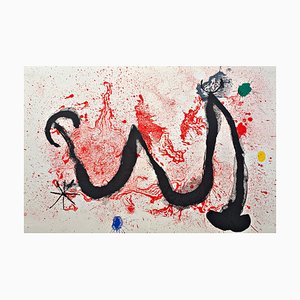
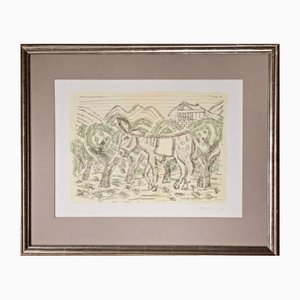
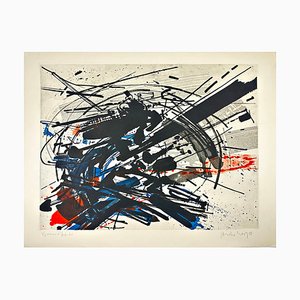
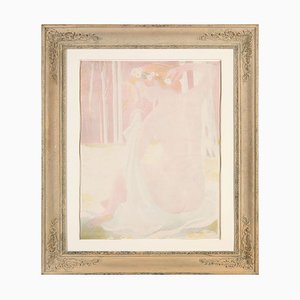
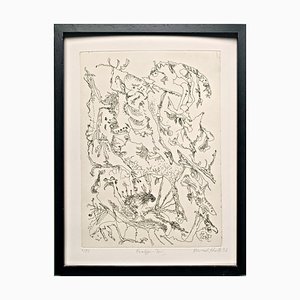
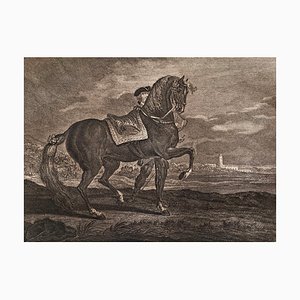

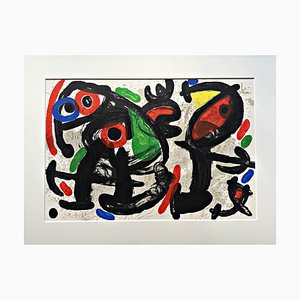
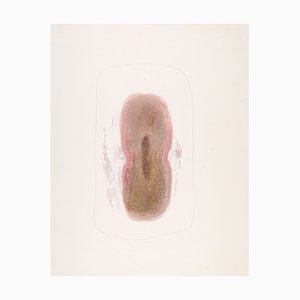
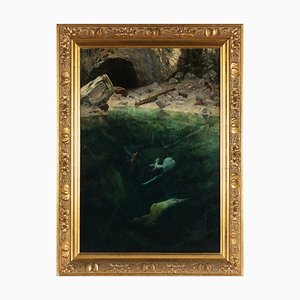
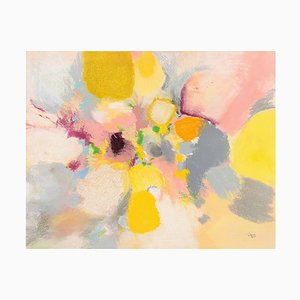
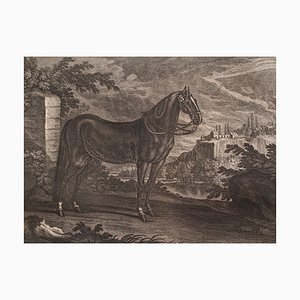
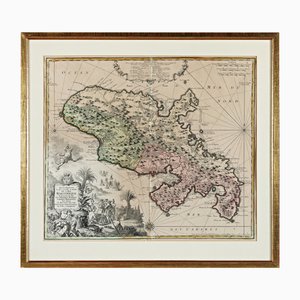
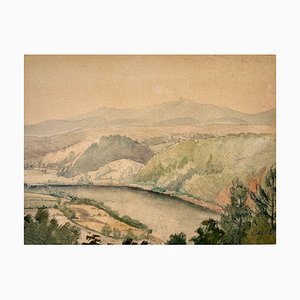
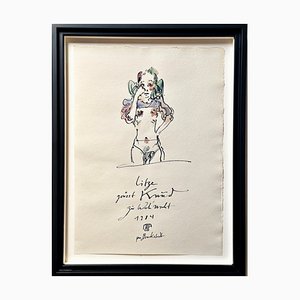

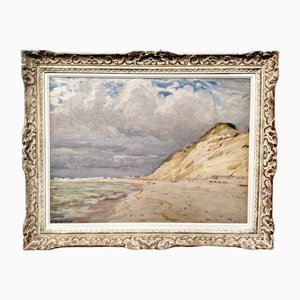
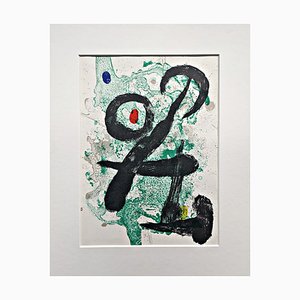
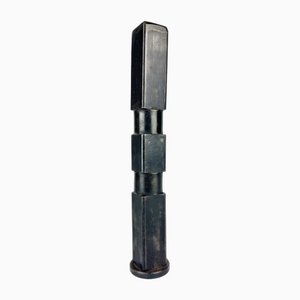

Contattaci
Fai un'offerta
Abbiamo notato che sei nuovo su Pamono!
Accetta i Termini e condizioni e l'Informativa sulla privacy
Contattaci
Fai un'offerta
Ci siamo quasi!
Per seguire la conversazione sulla piattaforma, si prega di completare la registrazione. Per procedere con la tua offerta sulla piattaforma, ti preghiamo di completare la registrazione.Successo
Grazie per la vostra richiesta, qualcuno del nostro team vi contatterà a breve.
Se sei un professionista del design, fai domanda qui per i vantaggi del Programma Commerciale di Pamono